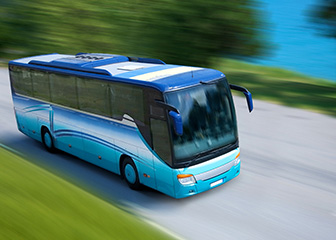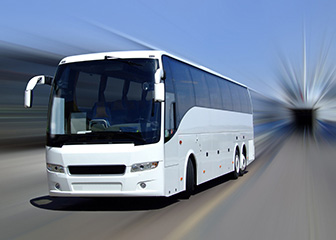
All types of bus drivers have to obtain a CDL.
Bus drivers must have a commercial driver’s license (CDL) and complete a short training. A driver must also meet hearing and vision requirements. In addition, they often need a high school diploma or the equivalent.
Training
Bus drivers typically go through 1 to 3 months of training. Part of the training is spent on a driving course, where drivers practice various maneuvers with a bus. They then begin to drive in light traffic and eventually make practice runs on the type of route that they expect to drive. New drivers make regularly scheduled trips with passengers, accompanied by an experienced driver who gives helpful tips, answers questions, and evaluates the new driver's performance.
Some drivers’ training is also spent in the classroom. They learn their company’s rules and regulations, state and municipal traffic laws, and safe driving practices. Drivers also learn about schedules and bus routes, fares, and how to interact with passengers.
Licenses
All bus drivers must have a commercial driver’s license (CDL). The qualifications for getting one vary by state but generally include passing both knowledge and driving tests. States have the right not to issue a license to someone who has had a CDL suspended by another state.
Drivers can get endorsements to a CDL, which reflect their ability to drive a special type of vehicle. All bus drivers must have a passenger (P) endorsement, and school bus drivers must also have a school bus (S) endorsement. Getting the P and S endorsements requires additional knowledge and driving tests administered by a certified examiner.
Many states require all bus drivers to be 18 years of age or older and those who cross state lines to be at least 21 years old.
Federal regulations require testing bus drivers for drug or alcohol abuse and random testing while on duty. In addition, bus drivers can have their CDL suspended if they are convicted of a felony involving the use of a motor vehicle or driving under the influence of alcohol or drugs. Other actions also can result in a suspension after multiple violations. A list of violations is available from the U.S. Federal Motor Carrier Safety Administration.
Education
Some employers prefer drivers to have a high school diploma or equivalent.
Advancement
Opportunities for promotion are generally limited, but experienced drivers may become supervisors or dispatchers. Some veteran bus drivers become instructors of new bus drivers.
Important Qualities
Customer-service skills. Bus drivers regularly interact with passengers and must be courteous and helpful.
Hand-eye coordination. Driving a bus requires the controlled use of multiple limbs based on what a person observes. Federal regulations require drivers to have normal use of their arms and legs.
Hearing ability. Bus drivers need good hearing. Federal regulations require the ability to hear a forced whisper in one ear at five feet (with or without the use of a hearing aid).
Patience. Due to possible traffic congestion and sometimes unruly passengers, bus drivers are put in stressful situations and must be able to continue to calmly operate their bus.
Physical health. Federal regulations do not allow people to become bus drivers if they have a medical condition that may interfere with their operation of a bus, such as high blood pressure or epilepsy. A full list of medical reasons that keep someone from becoming a licensed bus driver is available from the U.S. Federal Motor Carrier Safety Administration.
Visual ability. Bus drivers must be able to pass vision tests. Federal regulations require at least 20/40 vision with a 70 degree field of vision in each eye and the ability to distinguish colors on a traffic light.











